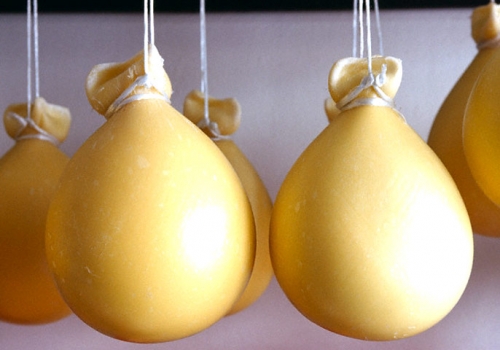Caciocavallo, made from unpasteurized cow, sheep, or less frequently used buffalo milk, is a well-known cheese of Southern Italy and Sicily. Picture two oversized, pear-shaped cheeses, about 4 pounds each, joined at the neck by rope. This cheese was specifically designed centuries ago for easy transport on pack animals. Consequently, many believe that the name "caciocavallo," means "cheese (on) horse." The small size and unique shape enhance this dairy product's exposure to microbes in the aging process which can last from two months to the optimal one year. Like mozzarella and provolone, caciocavallo is made by stretching and forming curd by hand, a process known as pasta filata.
Tasting somewhat like aged provolone and eaten in much the same way, caciocavallo is often served in thick slices at the end of a meal, along with fruit and a glass of red wine. The cheese boasts several interesting varieties and regional types. There is a smoked type, affumicato, and a spicy one, piccante. Caciocavallo primaverile, made from milk gathered in the spring, holds subtle flavors of aromatic herbs found in the year's early pastures. Caciocavallo Silano and Caciocavallo Ragusa, have gained PDO (Protected Designation of Origin) from the European Union. This labeling guarantees that the milk used in a particular cheese comes only from local herds.
Most Italian food stores in the U.S. carry caciocavallo, where its pair of yellow globes can often be seen hanging from the ceiling. If you've never tried this iconic table cheese from Sicily and Italy's southern regions, you are missing one of the country's important dairy exports and a major delight.



